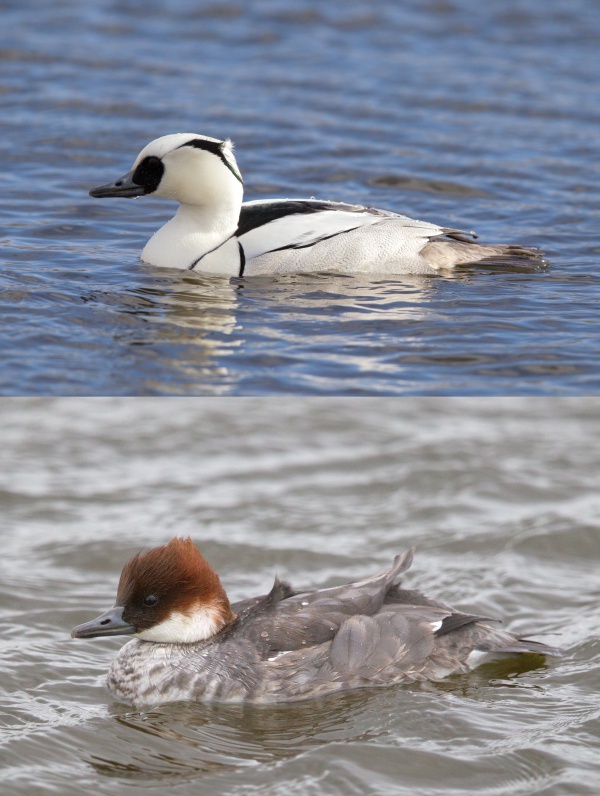Facts About Smew
The smew is a distinctive species of duck and the sole representative of the genus Mergellus. The name "smew" has been in use since the 17th century, though its etymology is somewhat obscure. It may be derived from old Dutch and German terms for "wild duck."
Male smews, or drakes, are easily identifiable due to their striking black-and-white plumage. Females and young males, in contrast, are predominantly grey with a distinctive chestnut forehead. These ducks are relatively small, measuring about 38-44 cm in length. One of their notable features is their bill, which has a hooked tip and serrated edges, ideally suited for catching fish.
Smews breed in the northern taiga regions of Europe and the Palearctic, favoring areas with abundant trees. They prefer fish-rich lakes and slow-moving rivers. During the winter months, they migrate to more sheltered coastal areas or inland lakes. Smews nest in tree holes and typically lay between 6 to 9 cream-colored eggs. They are quite shy and easily disturbed.
The smew is protected under the Agreement on the Conservation of African-Eurasian Migratory Waterbirds (AEWA). Although they are not currently considered threatened, their population is in decline.
Interestingly, fossil records indicate that birds similar to the smew existed up to 13 million years ago, with the modern species dating back to the Late Pleistocene. Fossils found in Hungary and England provide insights into their historical range. The smew is closely related to the genus Mergus and can even hybridize with the common goldeneye.

 Norway
Norway